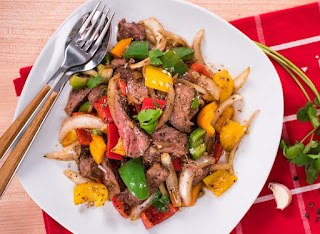Pasta alla genovese

A classic of Neapolitan cuisine, performed according to tradition, for a Neapolitan first course that however is identified as "pasta alla genovese". Let's also find out why. This pasta sauce, together with meat sauce, is one of the most recognized symbols of Neapolitan cuisine. Why, then, if Neapolitan pasta alla genovese is called... Genoese? There are many hypotheses that propose to explain this "strangeness": some argue that in the Aragonese era (fifteenth century) in the port area there were many places where this specialty of poor cuisine was served, very appreciated by the many Genoese sailors who frequented the place. According to others it was the cooks who prepared her to be Genoese, and according to yet another opinion to invent the recipe was a single brilliant cook, nicknamed "O Genovese". What is certain is that pasta alla genovese is a tasty example of how poor cuisine can create wonders with humble ingredients, such as onions. The onion sauce obtained at the end of the long cooking, in which a piece of beef was also cooked, was used partly to season pasta, together with some meat sfilaccio, and partly to sauce the beef, which was eaten as a second course.
This is a traditional recipe of Campania that is widespread and appreciated by everyone; despite its name, it is unknown in the Ligurian capital. This rich tomato-free ragù, prepared with lots of onions that turn into a delicious puree when cooked, is highly flavorsome and presents a sweet note. This is why the sauce needs to be balanced with the acidity of the wine and lastly, left to thicken, or 'dry'. Some save the meat and enjoy it as a second course, others prefer to use it all with the pasta, just like I have done!
Lastly, the addition of grated cheese and pepper to the finished dish is also hotly debated... You will have noticed that genovese is a classic recipe loved by everyone, because you can choose the version best suited to your family's taste. I tried to collect the essence of tradition, but I would love to find out about your versions too! Together with Neapolitans I share the gastronomic dilemma: genovese, Neapolitan soffritto or the classic Neapolitan ragù?
Braised beef and onions, but make it ragù. That's "la Genovese," a classic Neapolitan sugo, in a nutshell. (It's not Ligurian, despite its name.) Carrots, celery, a ton of onions, and a "seconda scelta" (literally, "second choice") cut of beef, which we would call a "tough" cut, slowly cooked down with white wine to form a meaty gravy, perfect for dressing al dente rigatoni. Like ragù Napoletano and many other Central and Southern Italian meat sauces, la Genovese was historically a two-for-one recipe that allowed cooks to stretch a braise over multiple courses and meals. The concept is simple: Slowly braise tough cuts of meat with aromatics until tender, then use the braising liquid as a sauce for dressing pasta (or polenta in certain areas), while serving the meat as its own course.
INGREDIENTS
Rigatoni pasta ¾ lb (320 g)
Beef 1 lb (600 g) - (blade/eye round/silverside)
Yellow onions 2 lbs ( kg)
Celery 2 oz (75 g)
Carrots 2 oz (75 g)
Parsley 1 sprig
Bay leaves 1 leaf
White wine ⅔ cup (150 g)
Extra virgin olive oil to taste
Fine salt to taste
PREPARATION
To make pasta alla genovese, start by peeling and thinly slicing the onion. Peel and finely chop the carrots. Finely chop the celery too, leave the tuft to one side. Tie the celery tuft, parsley and laurel leave together with cooking twine for a bouquet garni. Lastly, prepare the meat by removing any excess fat and cutting it into 5 pieces. Add a generous amount of oil to a large saucepan, followed by the onions, the celery and the carrot. Leave to flavor on a low flame for a few minutes, then add the meat. Add the bouquet garni and a pinch of salt, stir and leave to flavor for a few minutes. Lower the flame, cover with the lid and cook for around 3 hours. There is no need to add water or squash because the onions will release enough liquid into the cooking sauce so that it does not dry out. However, it is important to check and occasionally stir it. Remove the bouquet garni once the 3 hours are up. Now add part of the wine and simmer on a high flame. Stir and continue to cook for another hour without the lid, gradually add the remaining wine as the sauce thickens. Once the cooking time is up, cook the pasta in boiling salted water. Drain the pasta when firm to the bite and place it back in the saucepan. Stir well to amalgamate the sauce, then serve your pasta alla genovese, sprinkled with some pepper and grated Parmigiano if you wish!




















